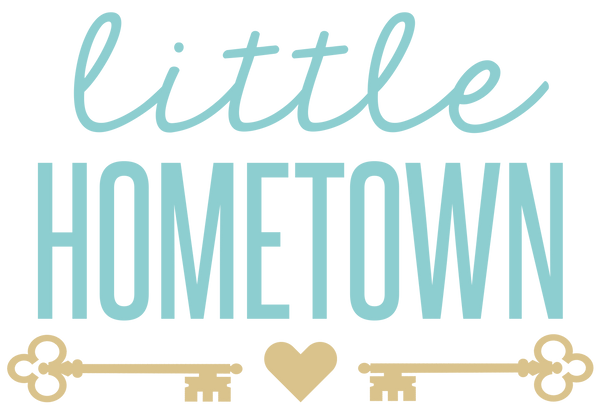As parents, nothing matters more than the safety and comfort of your baby, especially during sleep. Dressing your newborn properly for sleep is not just about keeping them cozy—it’s about ensuring they are safe and secure throughout the night. At Little Hometown, we believe in nurturing moments of connection between you and your baby, and this guide will walk you through how to dress your newborn for safe sleep using simple, transparent advice.
From understanding newborn sleepwear layers to choosing the right TOG rating for baby sleepwear, we’ll help you create a soothing sleep environment without the need for blankets. Let’s get started!
Why Safe Sleepwear Matters for Newborns
Newborns are still learning to regulate their body temperature, which makes them sensitive to both overheating and chilling. Proper sleepwear ensures your baby stays comfortable while reducing risks like Sudden Infant Death Syndrome (SIDS). Loose blankets or improper layering can pose suffocation hazards or cause overheating, making it essential to use safe alternatives like baby sleep sacks.
At Little Hometown, we’ve curated collections of swaddles and sleep sacks, and sleepwear designed with love and care to provide the ultimate comfort for your little one.
Key Guidelines for Dressing Your Baby Safely
1. Monitor Room Temperature
The ideal room temperature for a baby’s sleep environment is between 68°F and 72°F (20°C–22°C). Use a nursery thermometer to keep track of the room temperature and adjust your baby’s clothing accordingly.
2. Layering Sleepwear Thoughtfully
Babies typically need one more layer than adults would wear in the same room. Here’s how layering works:
-
Warm Nights: A short-sleeve onesie paired with a lightweight sleep sack (0.5 TOG).
-
Cool Nights: A long-sleeve bodysuit with footed pajamas and a medium-weight sleep sack (1–2 TOG).
-
Cold Nights: A long-sleeve bodysuit, thick footed pajamas, and a high-TOG quilted sleep sack (2.5–3.5 TOG).
3. Avoid Overheating
Overheating can increase the risk of SIDS. Signs of overheating include sweating, flushed cheeks, or damp hair around the neck. Always check your baby’s chest or back, not their hands or feet, for accurate temperature monitoring.
4. Skip Blankets
Loose blankets are not recommended for babies under one year old due to suffocation risks. Instead, opt for wearable blankets like baby sleep sacks, which provide warmth without compromising safety.
What Is a TOG Rating? Why Does It Matter?
TOG stands for Thermal Overall Grade, which measures the warmth of a garment or blanket. Choosing the right TOG rating ensures your baby stays comfortable without overheating or getting too cold during sleep.
|
Room Temperature (°F) |
Recommended TOG Rating |
Example Sleepwear |
|
Above 75°F |
0.2–1 |
Short-sleeve onesie + lightweight muslin sleep sack |
|
68°F–75°F |
1–2 |
Long-sleeve bodysuit + medium-weight cotton sleep sack |
|
61°F–68°F |
2–3 |
Footed pajamas + fleece or quilted sleep sack |
|
Below 61°F |
3+ |
Thick pajamas + high-TOG quilted sleep sack |
When shopping for TOG-rated products, explore our sleepwear collection for breathable fabrics that are gentle on sensitive skin.
Why Choose Baby Sleep Sacks Over Blankets?
Baby sleep sacks are wearable blankets that keep your little one snug without the risks associated with loose bedding. At Little Hometown, we lovingly design our swaddles and sleep sacks with soft, breathable fabrics that ensure safety and comfort every night.
Benefits of Baby Sleep Sacks:
-
Safety First: Unlike traditional blankets, sleep sacks stay securely in place and don’t cover your baby’s face.
-
Temperature Control: Available in various TOG ratings to suit different seasons.
-
Convenience: Many designs feature zippers for easy diaper changes during nighttime.
Sleep sacks should fit snugly around the neck and armholes while allowing freedom of movement in the legs.
How to Dress Your Baby Without a Blanket
Dressing your baby without a blanket involves layering clothing based on room temperature:
Example Scenarios:
-
Warm Weather (Above 75°F):
-
Short-sleeve onesie
-
Lightweight muslin sleep sack (0.5 TOG)
-
Moderate Weather (68°F–75°F):
-
Long-sleeve bodysuit
-
Medium-weight cotton sleep sack (1–2 TOG)
-
Cool Weather (61°F–68°F):
-
Footed pajamas
-
Fleece or quilted sleep sack (2–3 TOG)
-
Cold Weather (Below 61°F):
-
Thick footed pajamas + long-sleeve bodysuit
-
High-TOG quilted sleep sack (3+ TOG)
When you shop at Little Hometown, you’ll find thoughtfully designed swaddles and sleep sacks to suit every season.
Tips for Choosing Safe Newborn Sleepwear
-
Opt for breathable fabrics like cotton or bamboo to prevent overheating.
-
Avoid hats at bedtime—babies release heat through their heads.
-
Check your baby’s chest or back regularly to ensure they’re not too hot or cold.
-
Keep all loose items out of the crib.
-
Adjust layers as needed if the room temperature fluctuates.
At Little Hometown, we understand that every parent wants their child to feel nurtured and secure during those precious moments of rest. Our collections of swaddles and sleep sacks are crafted with love to help you create a safe sleeping environment while embracing the beauty of home wherever you are!
Read More:
Onesie Fabrics: Choosing the Best Material for Your Baby
FAQs
1. How many layers should my newborn wear at night?
Your newborn should wear one more layer than you would wear in the same room.
2. What is a safe TOG rating for summer?
A TOG rating between 0.2 and 1 is ideal for summer nights above 75°F.
3. Can I use blankets instead of a sleep sack?
No, blankets are not recommended for babies under one year due to suffocation risks.
4. How do I know if my baby is too hot?
Signs include sweating, flushed cheeks, and damp hair around their neck.
5. What should my baby wear if it’s very cold?
Layer with thick footed pajamas, a long-sleeve bodysuit, and a high-TOG quilted sleep sack rated above 3.



